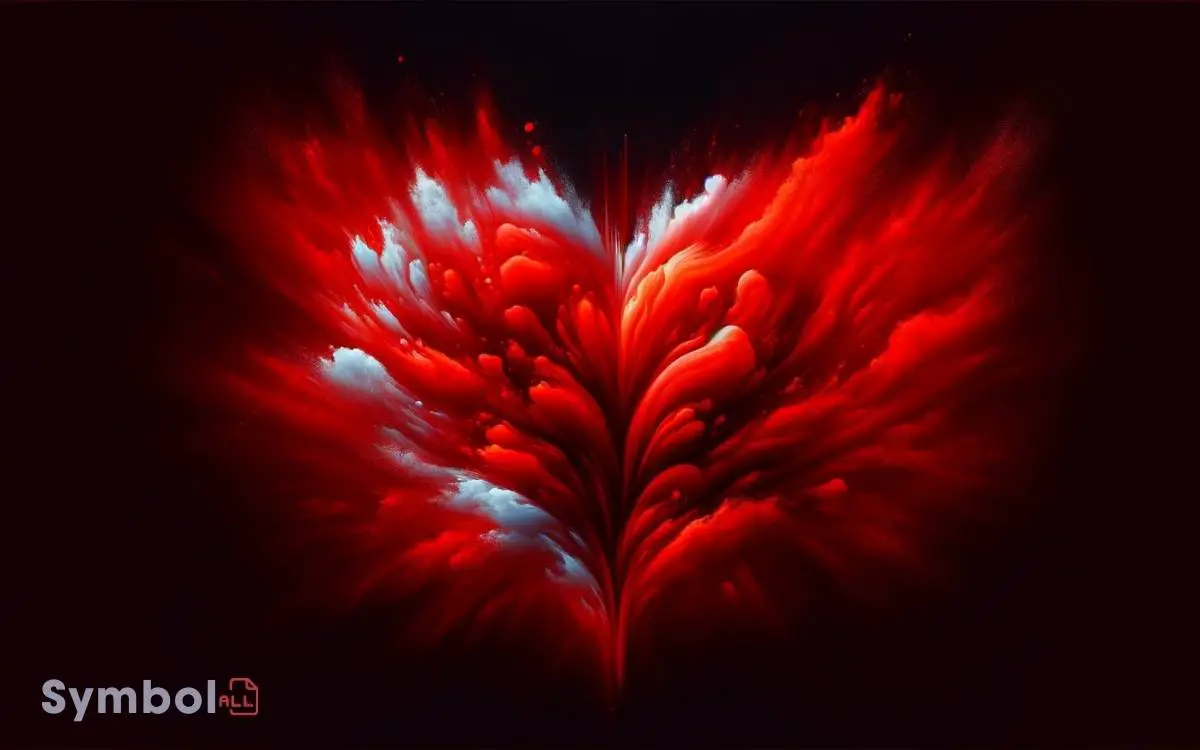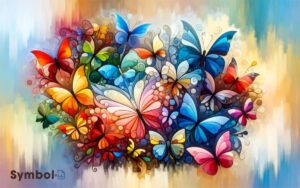What Does the Color Red Symbolize? War, Power and Love!
You’ve noticed red captures attention, but it’s more than just a bright color. Historically, red symbolizes war, power, love, and passion. It’s the first color humans used in art, connecting it to life, death, and transformation due to its associations with blood and fire.
Culturally, its meanings vary: in China, it signifies luck and joy, while in South Africa, it represents mourning. Emotionally, red is tied to romantic love and seduction but also signals danger.
Politically, it conveys courage and sacrifice. Its natural connections, from blood to sunsets, underscore its primal essence. Understanding red’s multifaceted symbolism reveals deeper insights into its global significance.

Key Takeaway
Historical Significance
Throughout history, the color red has symbolized a myriad of emotions and concepts, from war and power to love and passion, embedding itself deeply in human culture and societal structures.
Its vibrancy and visibility have made it a tool for signaling danger or attracting attention, influencing its use in both natural and human-made environments.
In ancient times, red pigments were among the first colors used by humans for art and decoration, signifying its importance and accessibility.
This historical preference demonstrates not just an aesthetic choice but a profound psychological impact.
Red’s association with blood and fire links it inherently to life, death, and transformation, suggesting why it’s so emotionally charged and symbolically versatile.
Understanding red’s historical significance helps you grasp its complex role in conveying messages and evoking responses across different contexts.
Cultural Interpretations
Across cultures, the color red holds diverse meanings that reflect varied societal values and beliefs, highlighting its multifaceted role in human expression and communication.
- In China, red symbolizes luck, joy, and prosperity, often used in festivals and weddings to invite happiness and ward off evil.
- Conversely, in South Africa, red represents mourning, illustrating stark contrasts in cultural interpretations.
- Among the Maasai of Kenya, red signifies strength, courage, and unity, essential qualities for warriors.
This variation in meaning underscores the importance of context when deciphering red’s symbolism.
Such cultural nuances reveal how societies project their values onto colors, making red a compelling study in global symbolism. Its significance transcends mere aesthetics, embodying complex cultural narratives and ideologies. In literature, this is particularly evident in how authors use hues to evoke emotions or reflect societal values. For instance, color symbolism in Poe’s story underscores the intricacies of fear, mortality, and the human psyche, weaving red into a narrative of tension and foreboding. Such interpretations highlight the multifaceted role of color in shaping both personal experiences and collective cultural identities.
Emotional Resonance
Beyond its cultural significance, the color red profoundly impacts human emotions, evoking feelings that range from passionate love to intense anger.
This emotional resonance can be broken down into four primary aspects:
- Attraction and Desire: Red is often associated with romantic love and seduction, which is why it’s a common choice for Valentine’s Day and lingerie.
- Danger and Warning: Its high visibility makes red the color of stop signs and fire equipment, signaling caution.
- Power and Aggression: In competitive contexts, red can symbolize dominance and is frequently used by sports teams to intimidate opponents.
- Vitality and Celebration: In many cultures, red represents life, health, and prosperity, leading to its use in festivals and celebrations.
Understanding these emotional triggers of red enriches your comprehension of its profound influence on human behavior and societal norms.
Political Associations
Exploring the color red’s impact further, its role in the political arena reveals a complex tapestry of ideologies, power, and revolution.
You’ll find red at the heart of movements and parties advocating for change, symbolizing courage, sacrifice, and the fervent spirit of those fighting for their beliefs.
It’s not just a marker of leftist or socialist groups; red’s potency transcends specific political alignments, embodying the urgency and passion driving political action globally.
This color communicates a bold message of unity and defiance, rallying people under a common banner.
Its use in political contexts isn’t arbitrary; it’s a deliberate choice, leveraging red’s emotional resonance to inspire, mobilize, and sometimes intimidate, highlighting the strategic use of color in shaping political narratives and identities.
Natural Connections
The color red’s presence in nature, from the blood that courses through our veins to the vibrant hues of sunsets, has profound symbolic significance, intertwining our physical existence with deeper, existential meanings. It’s a reminder of the visceral, innate connections we share with the world around us.
Here’s why red is so impactful:
- Blood: Signifies life, vitality, and the shared essence of humanity.
- Sunsets and Sunrises: Symbolize cycles, changes, and the beauty in conclusions and beginnings.
- Flora: Red flowers often represent passion, danger, or attraction, driving pollination and perpetuation of species.
- Fauna: Red markings can signal warning or allure, playing essential roles in survival and mating rituals.
Understanding red in nature allows you to appreciate its primal, universal language, bridging the gap between the tangible and the abstract.
Conclusion
You’ve traveled through the labyrinth of red’s symbolism, uncovering its multifaceted essence. From its historical gravitas to its deep emotional currents, red paints our world with a vibrancy that’s hard to ignore.
Culturally rich and politically charged, it’s a color that can spark revolutions in hearts and nations alike.
At its core, red is the heartbeat of our planet, a natural thread weaving through our collective experiences. Indeed, exploring the symbolism of red is akin to investigating a universe within a drop of paint.






